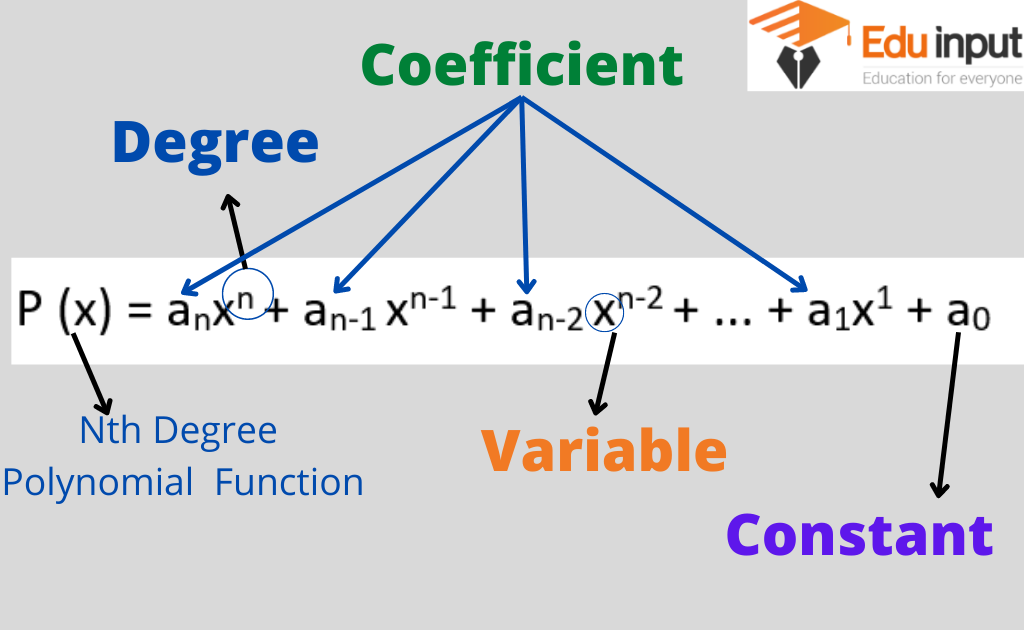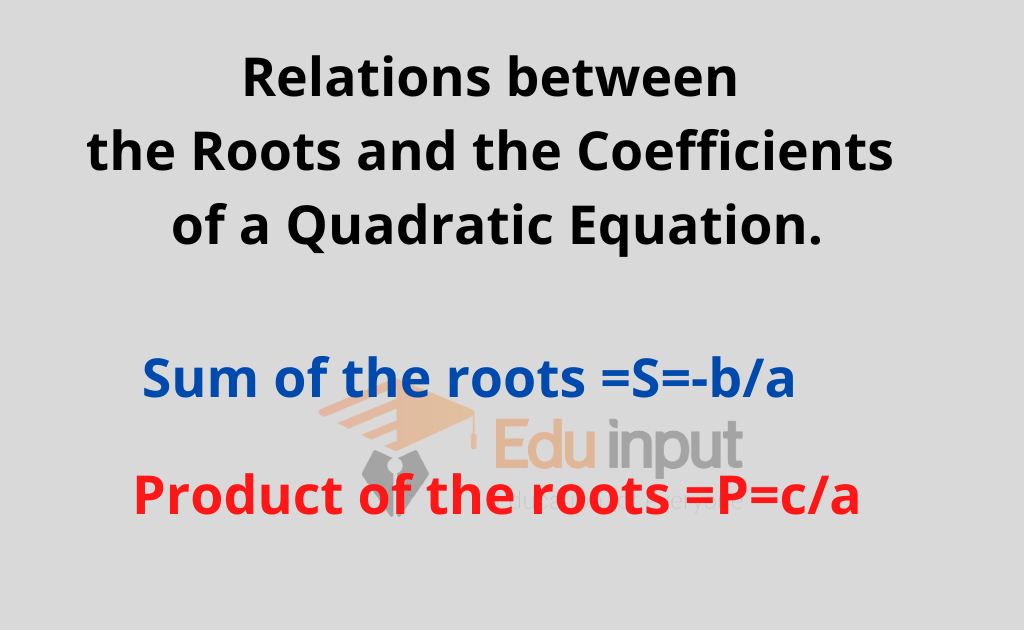Degree of Polynomial Function-Classification of Degree of a Polynomial
Polynomials function is one of the significant concepts of mathematics, and so is the degree of polynomials, which find the maximum number of solutions a function could have and the number of times a function will cross the x-axis when graphed.
It is the greatest exponential power in the polynomial equation. Let us learn in detail about this concept and how to find the degree of a polynomial.
What is the degree of a polynomial function?
The degree of a polynomial is the greatest exponential power in the polynomial equation. Only variables are considered to check for the degree of any polynomial, coefficients are to be ignored. For an nth degree polynomial function with real coefficients and x as the variable having the greatest power n, where n takes whole number values, the degree of a polynomial
P (x) = anxn + an-1 xn-1 + an-2 xn-2 + … + a1x1 + a0
In standard form is given as ‘n’.
Definition of the degree of a polynomial
The degree of a polynomial is the highest exponent of a variable in the polynomial equation. To calculate the degree of a polynomial function, only the terms with variables are considered to calculate the degree of the polynomial. The greatest exponential power of the variable term in the polynomial represents the degree to that polynomial
Given below is the polynomial function, where the greatest exponent of x is n. Hence, n is the degree of a polynomial in this function.

How to Find the degree of the polynomial
Consider the polynomial function: p(x): 3x5−12x3+3x+2 the term with the greatest power of x is 3x5 and the corresponding (highest) exponent is 5. Therefore, we will say that the degree of this polynomial is 5.
Thus, the degree of a polynomial is the maximum power of the variable in the polynomial. We can represent the degree of a polynomial by
Deg (p(x)). Given below are some examples:
Deg(X4+1)=4
Deg (1+x+x2+x3+…+x20) =20
Degree of a constant polynomial
A constant polynomial (P(x) = c) has no variables. Since there is no variable, there is no exponent to it. So it can be written as P(x) = Cx0 by theorem x0 = 1. Thus, the degree of the constant polynomial is zero.
For example:
For 5 or 5×0, degree = 0
3 or 3x0=0
Degree of the more than one variable polynomial
The degree of a polynomial with more than one variable can be determined by adding the power of each variable in it.
For example:
7x3 + 4x2y2 + 2xy.
7x3 has a degree of 3 (x has a power of 3).
4x2y2 has a degree of 4 (x has a power of 2, y has 2, so 2+2=4).
2xy has a degree of 2 (x has a power of 1, y has 1, so 1+1=2).
The largest degree out of those is 4, so the polynomial has a degree of 4
Degree of a zero polynomial
When all the coefficients of the variable are equal to zero, the polynomial is considered to be a zero polynomial. It is of the form f(x) = 0. We can write it as:
- f(x) = 0x0
- f(x) = 0x1
- f(x) = 0x2
- and so on.
By this time, you might have understood that the degree of a zero polynomial is undefined. So, the degree of the zero polynomial is either undefined or sometimes it is defined in a way that is negative (-1 or -∞).
Classification of degree of a polynomial
Each of the polynomials has a specific degree and based on that they have been assigned a specific name. Let’s classify the polynomials based on the degree of a polynomial with examples.
| Polynomial | Degree | example |
| Constant Polynomial | Polynomials with Degree 0 | 4 |
| Linear Polynomial | Polynomials with Degree 1 is called a linear equation | X+7 |
| Quadratic Polynomial | Polynomials with Degree 2 is called a quadratic equation | X2+3x+2 |
| Cubic Polynomial | Polynomials with Degree 3 | 2x3 + 3x2 + 4x + 6 |
| Quartic Polynomial | Polynomials with Degree 4 | X4-15 |
| Quantic Polynomial | Polynomials with Degree 5 | 7x5+ 2x3 – 20 |
Degree of a polynomial trick and tips
In order to calculate the degree of a polynomial, you can follow these steps:
- Identify each term of the given polynomial.
- Ignore constant terms, Combine all the like terms, and the variable terms:
- Arrange those terms in descending order of their exponent or power.
- Find the term with the greatest exponent and that defines the degree of the polynomial
The important point on the degree of a polynomial
- Degree of a polynomial with only one variable: The greatest exponent of the variable in the polynomial (using Descartes’ rule of signs)
- Degree of a polynomial with more than one variable: Add the power of each variable given in a term, and find which term has the highest degree. That will be considered as the degree of the polynomial.
- Degree of a rational expression: Take the degree of the top (numerator) and subtract the degree of the bottom (denominator)

 written by
written by 





Leave a Reply